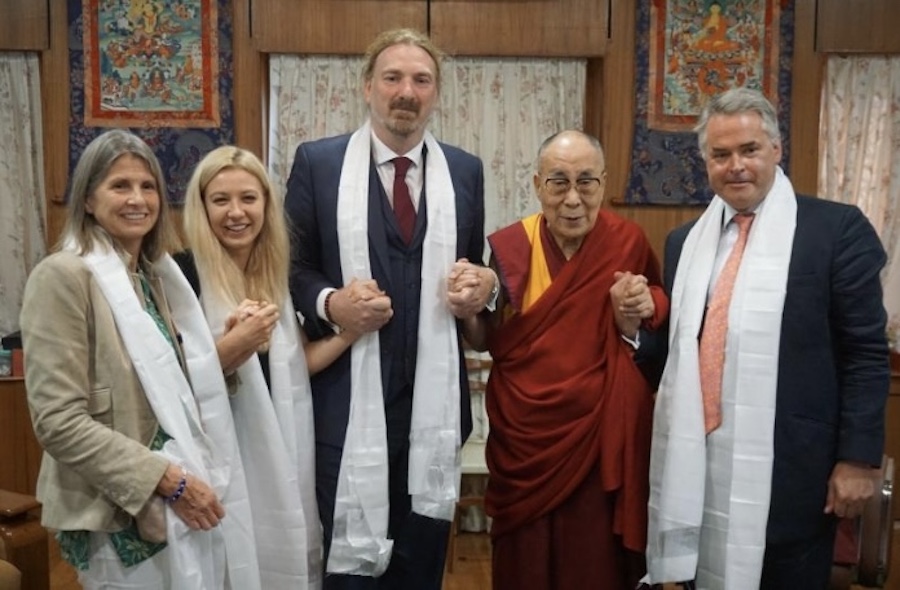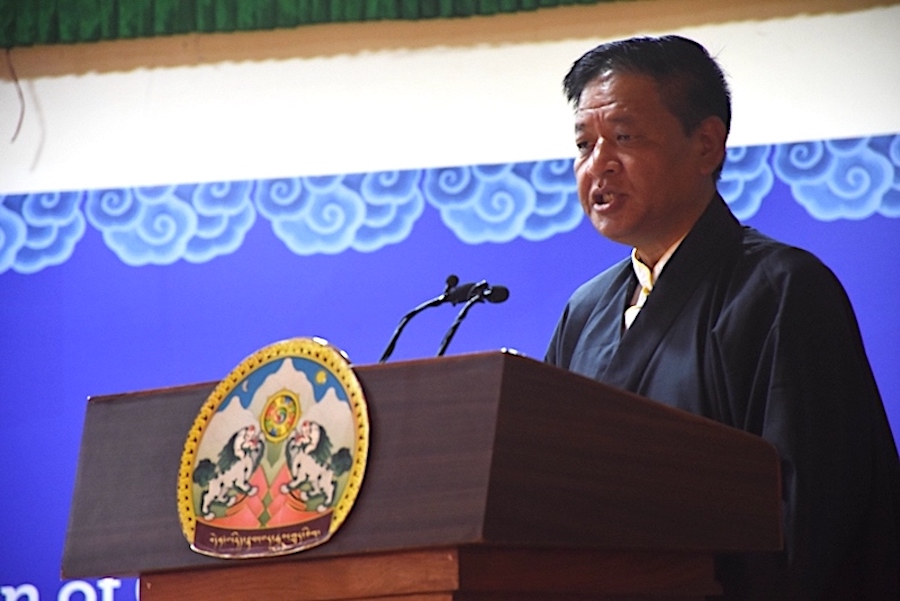REVIEW BY JEFFREY PAINE
Was there ever a more unlikely life story? A child is born somewhere too remote to appear on any known map, and his childhood, though taking place in the mid-20th century, is redolent of the Middle Ages. Yet that boy grows up to become probably the most admired citizen of the world today. The strangest fact about the Dalai Lama’s strange life, though, is that it remains largely untold. Most books promoted as biographies of him hardly qualify as such and are indeed no more revealing than Testu Saiwai’s recent manga, or cartoon, biography.
 Of the recent attempts to provide insight into the Dalai Lama, the most ambitious is popular writer Stephan Talty’s “Escape from the Land of Snows.” Talty has actually written three books in one: a biography of the young Dalai Lama up to his 24th year (1959), a history of recent Tibet and a hair-raising tale of daring and escape. The last of these makes Talty’s story come alive – and made the Dalai Lama the man he is today.
Of the recent attempts to provide insight into the Dalai Lama, the most ambitious is popular writer Stephan Talty’s “Escape from the Land of Snows.” Talty has actually written three books in one: a biography of the young Dalai Lama up to his 24th year (1959), a history of recent Tibet and a hair-raising tale of daring and escape. The last of these makes Talty’s story come alive – and made the Dalai Lama the man he is today.
In 1959, a decade after China’s brutal conquest of Tibet, a rumor leaked out that the Chinese communists were planning to assassinate the Dalai Lama. At a moment’s notice, with scarcely any provisions, he undertook a near-suicidal flight across the trackless Himalayas. During that journey he began to shed the Tibetan ritual and ceremony that had always cocooned him. Confronting constant hardship, danger and imminent death, he transformed himself from an institution into an individual and thus began the process in which he became a Dalai Lama not just for Tibetans but for religious seekers everywhere.
This adventure Talty tells remarkably well. Earlier, however, he seems almost timid with his materials: cautious when describing the Dalai Lama’s uncanny childhood, lest he appear too gullible; hedging when recounting Chinese atrocities in Tibet, lest he appear too partisan. (Here Saiwai’s manga biography is clearer, exploring what was extraordinary and indicting what was brutal. Comic strips can be freer.) Worse, the Dalai Lama is offstage for nearly half the book while Talty explains Tibetan politics and history, and his inner character remains as elusive as ever.
The Dalai Lama himself prefers not to discuss his inner life but rather social issues or Buddhist thought. As for the latter, others – notably Anam Thubten, Traleg Kyabgon and Tsoknyi Rinpoche – have written books that explain Tibetan Buddhism better to Westerners. If Tibetan Buddhism is popular among non-Tibetans today, it is not for what the Dalai Lama says but for how he has acted and lived out its principles in public. Two new books with the Dalai Lama himself named as their author would seem to offer us both a look from the inside and a sense of why he is such an attractive figure.
Except that the Dalai Lama did not write, or apparently read, any of “The Essence of Happiness,” nor of the best-selling “The Art of Happiness” from which it is excerpted. Howard Cutler has interviewed the Dalai Lama and from those interviews has assembled a self-help book, reduced here to nugget-size bites, that omits whatever is unique to or difficult about Tibetan Buddhism. A whole page, for example, is occupied by three words: “Change takes time.” One hardly needs the Dalai Lama to produce that pearl of wisdom; your addled great-uncle Clarence will do.
If “The Essence of Happiness” has a misleading byline, “My Spiritual Journey” has a misleading title, for it is no autobiography. These selected talks and teachings are assembled, though, to reveal “the temporal continuity of the Dalai Lama’s thinking.” And gradually the book does paint a kind of Portrait of the Lama as a Young (and Aging) Man, as it traces his largely unchanged consciousness from youth to the present day.
For readers interested in knowing what has remained constant in the Dalai Lama throughout his life, “My Spiritual Journey” identifies three characteristics. First, look for compassionate motivation: Far from hating the Chinese, for example, he prays for their welfare and thinks of them as his brothers and sisters. Secondly, look for the lack of self-importance: He considers his exceptional life as being merely ordinary, and he describes himself in a down-to-Earth, often comical light. Finally, and perhaps most important, is his mental flexibility. The Dalai Lama appears able to accommodate every possible situation: He can imagine how Tibetans could become an acceptable part of China, for instance, and he can accept that there may not be another Dalai Lama after him or, if there is, it could be a woman. “If I reincarnate as a woman,” he jokes, “naturally I will be a very beautiful woman physically.”
Among the things the Dalai Lama can accept is that there is no absolute need for his own religious calling. “As a Buddhist, I don’t see any difference between religious practice and daily life,” he writes. “One can do without religion, but not without spirituality.” “Spirituality” may be the most nebulous word in the English language, but “My Spiritual Journey” provides a definition that both devotee and atheist might approve: “the full blossoming of human values that is essential for the good of all.” And what would a fully blossomed human being look like? The four books reviewed here – in comic-book form or by collection of sayings, through adventure tale or indirect confession – provide one possible illustration, a workable prototype.
Jeffrey Paine is the author of, among other books, “Re-enchantment: Tibetan Buddhism Comes to the West” and the editor of “Adventures With the Buddha.”
Related Article: 3 good books for January reading









